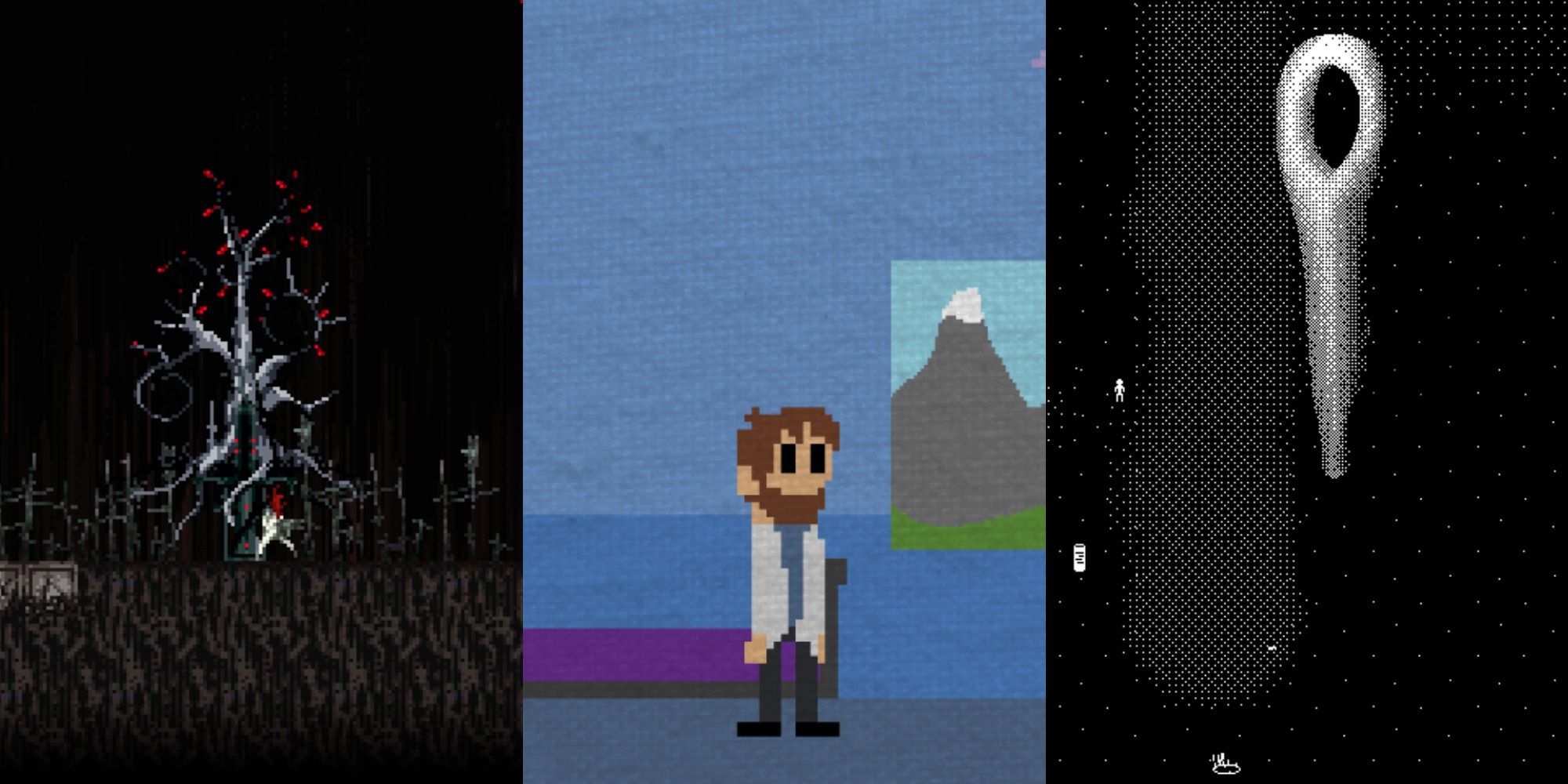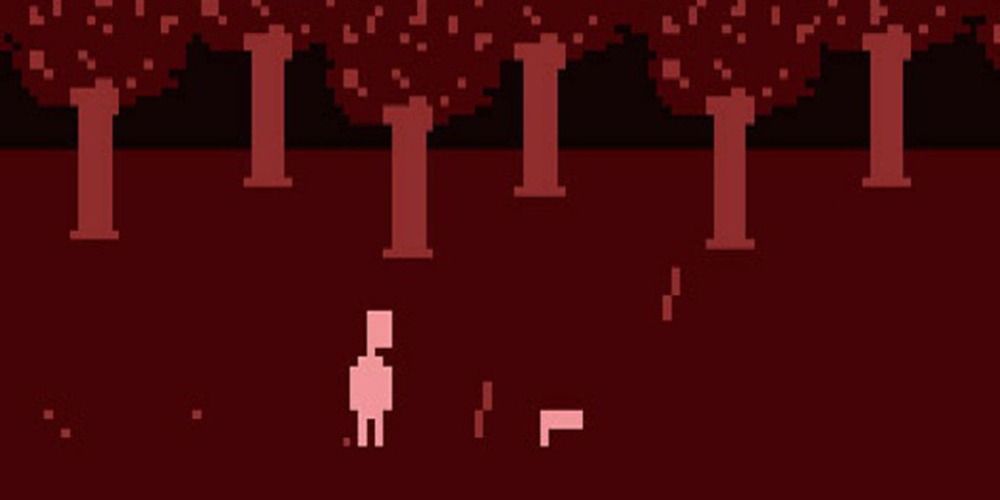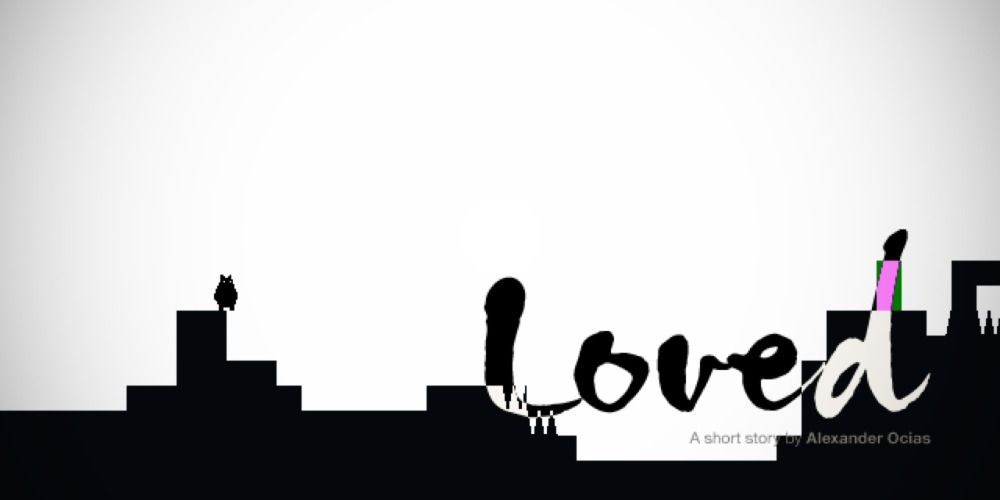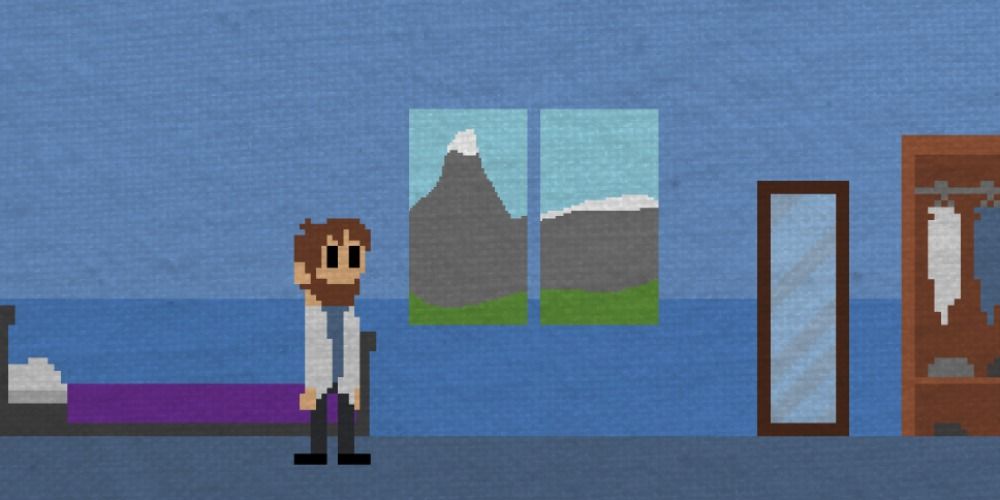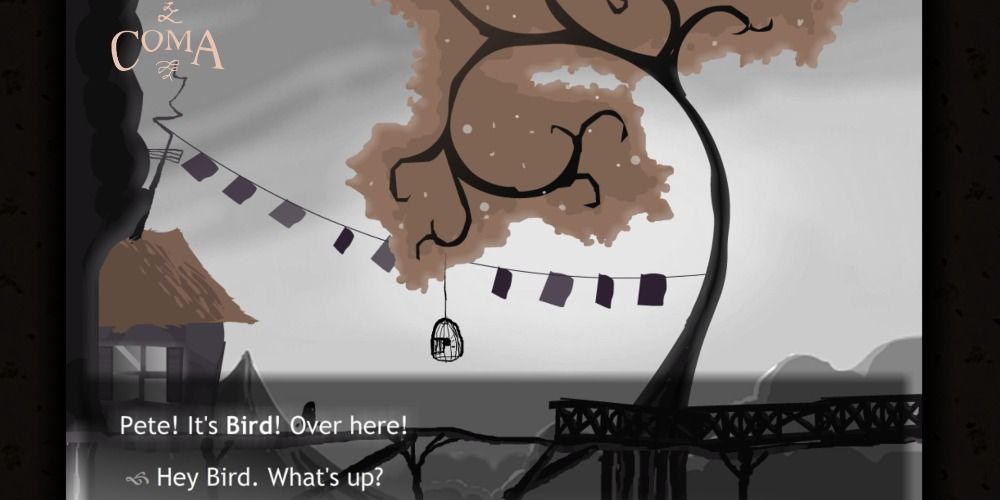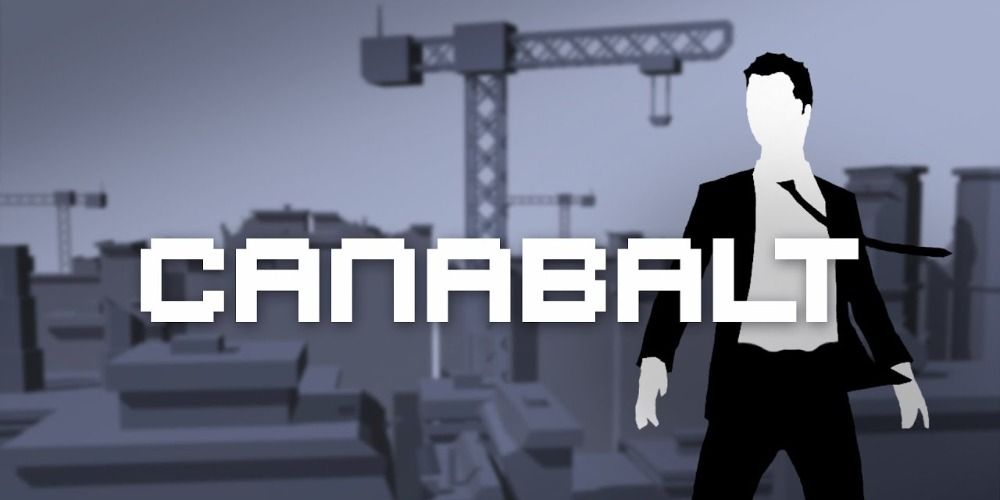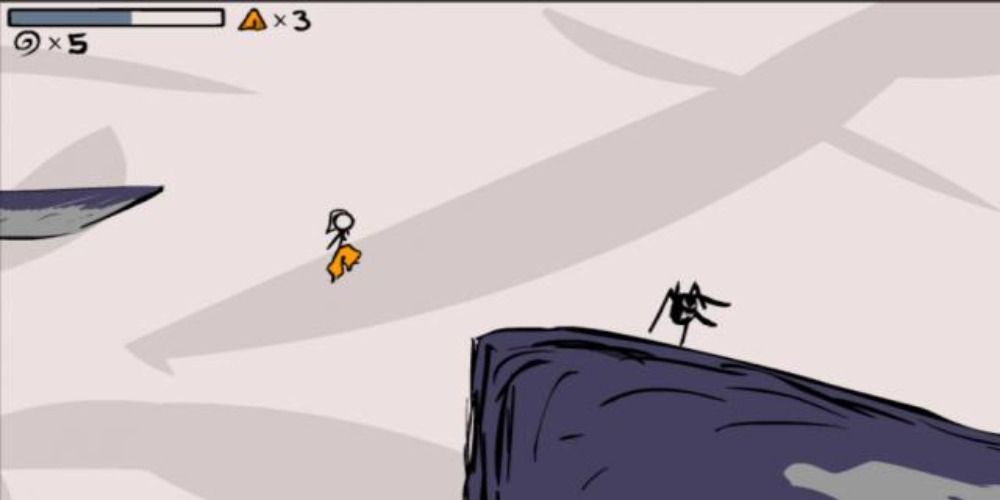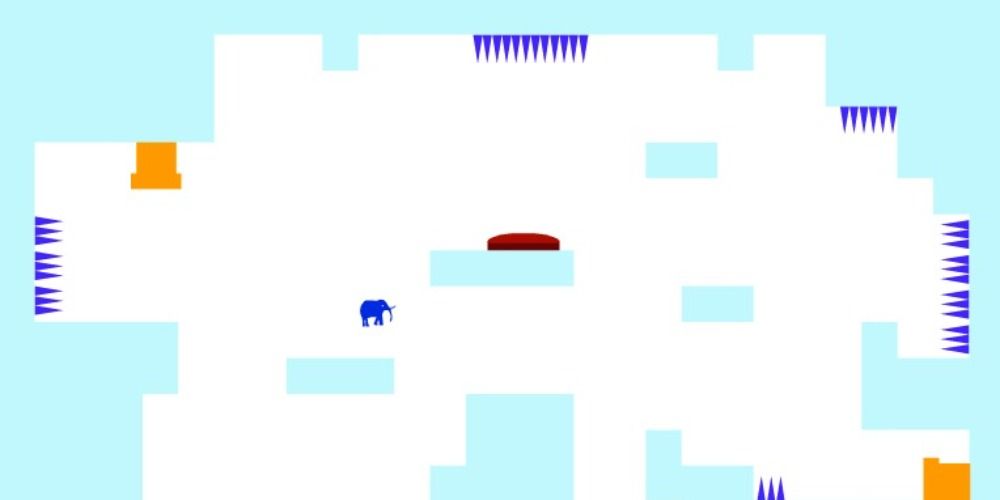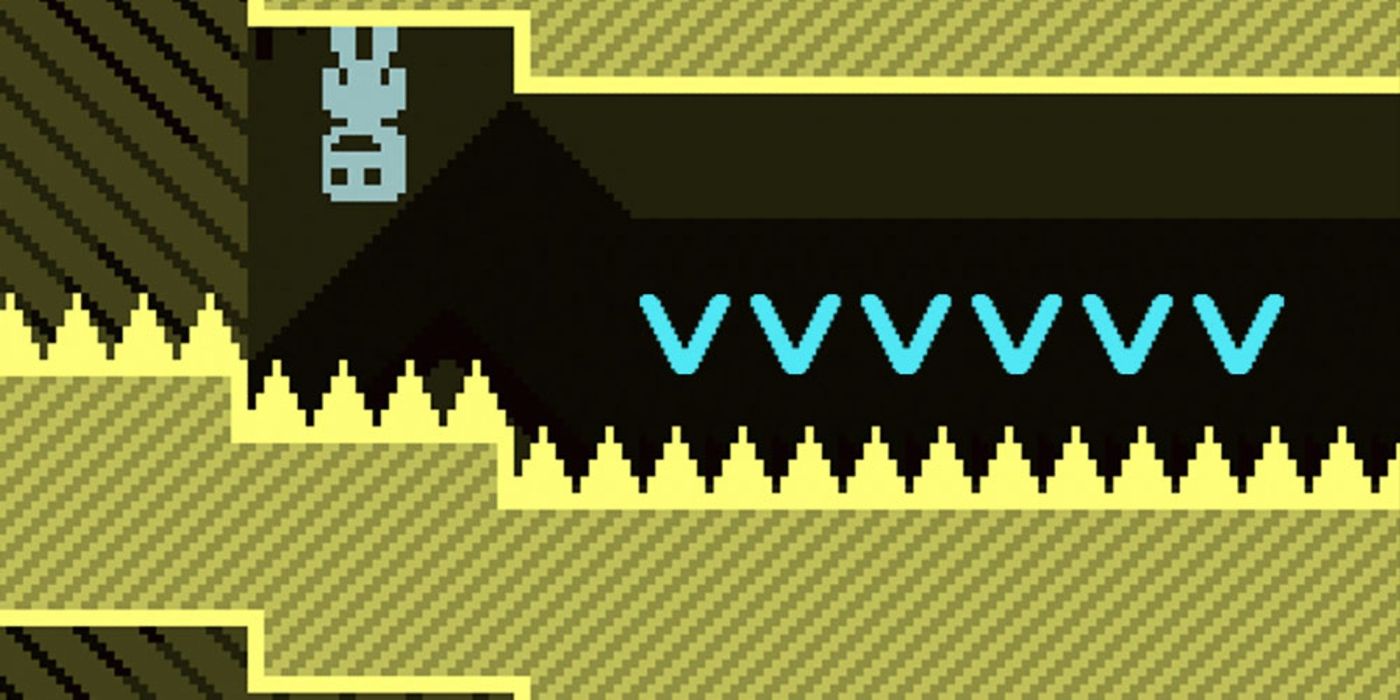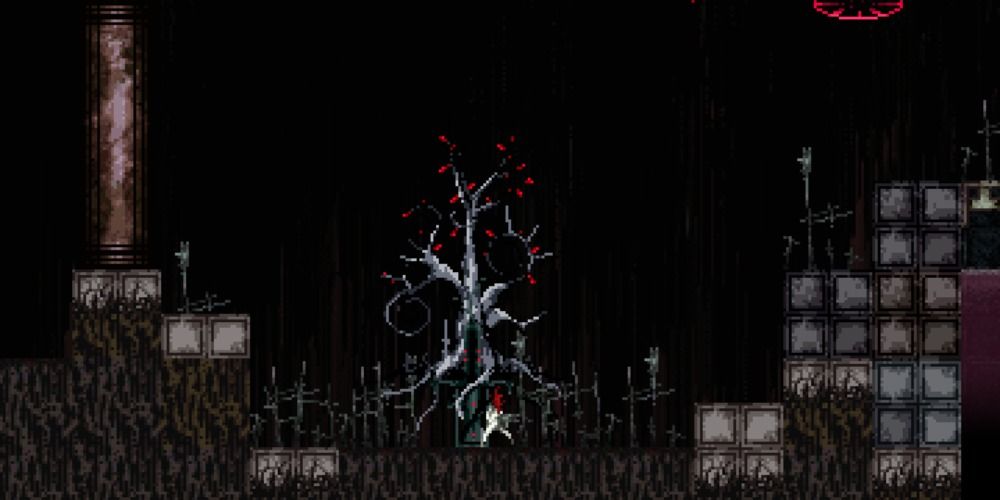Adobe Flash has been discontinued since the end of 2020 and most websites that used to support Flash games and other Flash content have moved onto other software programs, such as HTML5. Although Flash games were extremely popular in the early 2000s, now the genre essentially does not exist anymore.
Even though Flash is now officially a relic of video game history, however, many of these games did incredible things that should be talked about or even still played to this day. These include games that in some way went beyond what most games tried to do, at the time.
Don't Look Back
Created by Irish video game designer Terry Cavanagh in 2009, Don't Look Back is a short platformer that is based on the ancient Greek legend of Orpheus and Eurydice. This minimalist pixelated game begins with a man grieving at his dead lover's grave, and then the player takes control of this man, finds a gun, and leads him on a journey to the underworld to rescue his lover. Once the lover is rescued, the player has to continue to fight monsters and avoid hazards, without looking back.
While the game mimics the aesthetic of the old Atari 2600, it still manages to be an engaging experience that portrays the struggle of dealing with loss. At the end of the game, it is revealed that the journey was only a fantasy by the grieving man. Compared to other versions of this story, the interactive nature of video games allows people to connect with these characters on a deeper level.
Loved
Developed by Australian artist Alexander Ocias in 2010, Loved is a platformer that asks its players to question the structure of most video games. While navigating an anthropomorphic creature through various simple platform puzzles, an omniscient narrator gives instructions such as, "Throw yourself into the spikes" or, "Touch that statue. I will forgive you."
The interesting aspect about this game is that the player can choose to either follow the rules or not. If the player follows the directions, the narrator will praise the player and the world will become more detailed. But, if the player goes against the narrator, the narrator will ridicule the player and the world will become more colorful. These choices determine the ending the player gets.
Looming
Looming is a monochrome exploration game created by American writer, Gregory Avery-Weir. As a researcher named September, the player explores "Looming," which is a strange land filled with old artifacts to find. While collecting these items, the player slowly learns about September's lover, January, and about the civilizations that used to live in Looming.
Despite the minimalist art style, the research notes and written letters manage to tell an in-depth story about several different groups and a mysterious event known as "Epiphany." By the end of this short game, there is enough lore for a short novel.
One Chance
Created in 2010 by Dean Moynihan, One Chance is an adventure game where the player really only has one chance. The main character, Dr. John Pilgrim, has just created and released into the air a drug that "cures" cancer. But, it is quickly revealed that the drug kills all living cells instead of just cancer cells. Over the course of a few days, the player will have to make choices that determine the fate of the world.
Because the game uses cookies, whatever ending the player gets will be the only ending. Unless they delete their history, anytime the player comes back to the game, the game will just show the ending shot. So, this game is one of the few games in history that literally has permadeath.
Coma
While video game developer Thomas Brush has recently become well-known for games like Pinstripe, Brush used to make beautiful award-winning flash games. One of these is the adventure platformer Coma, which is about a boy named Pete who must solve puzzles in order to escape from his coma.
Although the game is short, Coma is such a hauntingly surreal and beautiful experience that it leaves a strong impact. Years later, Brush made a sequel to Coma called Neversong, which can now be played on Steam.
Canabalt
In 2009, American indie video game designer Adam Saltsman created the game that would popularize the endless running genre, Canabalt. This side-scrolling platformer follows a man as he runs from building to building while avoiding hazards that could slow him down or kill him. As the game progresses through the procedurally generated world, the man gets faster and the player continues until the man dies from not being fast enough or missing a jump.
The game has been ported to various devices and consoles, such as iOS, Android, and PSP. With the minimalist graphics and simple addicting gameplay, Canabalt is considered an important part of video game history and an example of video game art.
Fancy Pants Adventures
Fancy Pants Adventures is a series of side-scrolling platformers by the American video game developer Brad Borne. In these games, the player controls Fancy Pants Man, who is a stick figure with wild hair and a pair of bright orange shorts. With momentum-based gameplay that is similar to the Sonic the Hedgehog games, the player explores different levels, collects hidden items, discovers secret locations, and beats bosses.
Since the first game came out in 2006, the series has had multiple sequels, appeared on various consoles, such as the PS3, and won awards. The end of the latest installment in 2017, Super Fancy Pants Adventure, implies that the series is not done yet.
This Is The Only Level
Sacramento-based video game developer John Cooney has made multiple meta Flash games that centered around a blue elephant avatar. One of these is the game This is the Only Level, where the player has to play through one level over and over again. Each time, the level slightly changes so that the player has to do different things to beat the same level.
As one of the most popular meta Flash games, the game has had several sequels and was even ported to the PICO-8. This game, along with another one of Cooney's games Achievement Unlocked, is meant to be a commentary on gameplay mechanics and tropes.
VVVVVV
Cavanagh made another significant Flash game in 2010. VVVVVV is a puzzle platformer where the player controls Captain Viridian as they explore over 400 different rooms within Dimension VVVVVV in order to rescue their crew. But, this particular platformer is different from most because the player cannot jump. Instead, the player navigates through obstacles by controlling gravity.
With the game's creatures that originate from Cavanagh's dream journal and large open world to explore, VVVVVV is a unique retro-based experience that manages to make a giant universe using minimalist designs.
Gyossait
Gyossait is a retro-styled pixelated horror platformer created by Amon26 on Newgrounds. The game follows a god-turned-mortal named Oyeatia, who decides to travel to the core of a post-apocalyptic Earth to reconcile with the Goddess of Earth called Gyossait. Over the course of the game, the player can choose to either be a pacifist or be violent to progress, which determines which ending the player gets.
Even though the game is a side-scroller with retro-based designs, the game manages to create an unforgettably horrifying experience filled with overwhelming gore, disturbing imagery, and even a couple of subtle jump scares.

